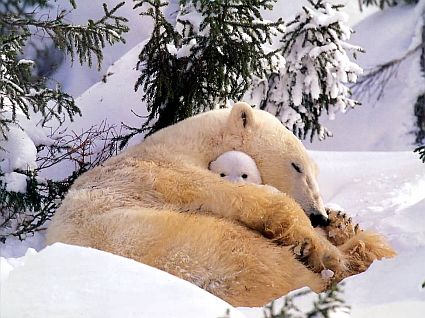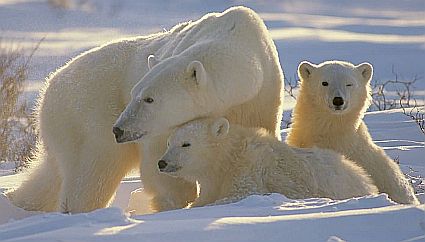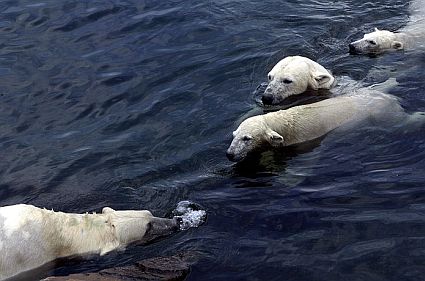One of the most threatened of the arctic species due to global warming are the polar bears. A diminishing ice pack directly affects polar bears, as sea ice is the platform from which they hunt seals. They must eat enough to last their hibernation period. Pregnant polar bears must create dens to protect new cubs from the Arctic winter.
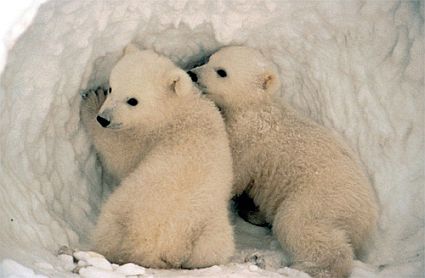
polar bear cubs, Image credit
Melting sea ice is driving mother polar bears onto dry land to give birth in northern Alaska, U.S. Geological Survey scientists reported on Thursday.
Polar bears live year round near arctic waters hunting seal and other animals, rarely coming on land except on islands and rocky points. In November polar bears retire to dens dug out of the snow or permafrost.
The females remain until the spring when they emerge with one or two cubs who stay with them for the next year and a half. The males spend a shorter time in the dens and may be seen out and about at any time of the year. Polar bears are a potentially threatened species living in the circumpolar north.
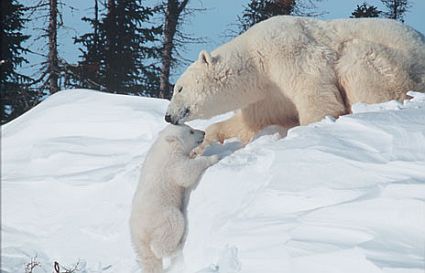
Image credit
Short trips are made to and from the den for several days as the cubs acclimate to the outside temperatures. Then the family leaves and makes its way to the sea ice where the mother feeds and protects her cubs. The family returns to the den the next winter and remains together during the following spring and summer. After two years together, the family disperses.
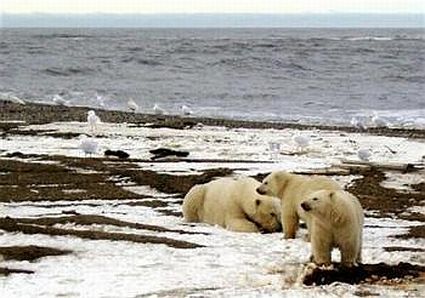
Just 37 percent of polar bear dens were built on sea ice between 1998 and 2004, compared to 62 percent between 1985 and 1994.
USGS researcher Steve Amstrup is quoted to have said:
Right now, pregnant females foraging offshore in summer must wait up to a month longer than they did even 10 years ago for new sea ice to form so they can travel to denning areas on land.
Alternatively, they must swim ever greater expanses of open water to reach suitable land denning habitat or they must den on ice that may not be stable enough to survive the winter.
The polar bear is the most carnivorous member of the bear family, and the one that is most likely to prey on humans as food. It feeds mainly on seals, especially ringed seals that poke holes in the ice to breathe, but will eat anything it can kill: birds, rodents, shellfish, crabs, beluga whales, young walruses, occasionally musk oxen or reindeer, and very occasionally other polar bears.
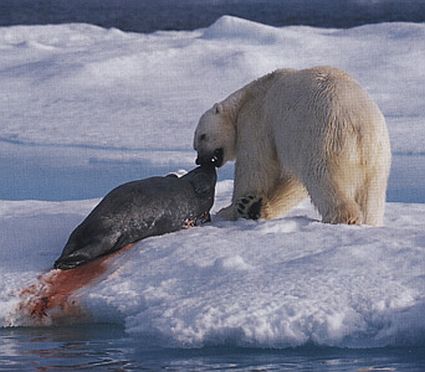
Image credit
Unfortunately the days are not far when the ice will freeze so late that bears will be stranded at sea too far away to reach land safely. As per the World Conservation Union (IUCN) estimates there are in between 21,500 to 25,000 polar bears left globally.
Source: Reuters


